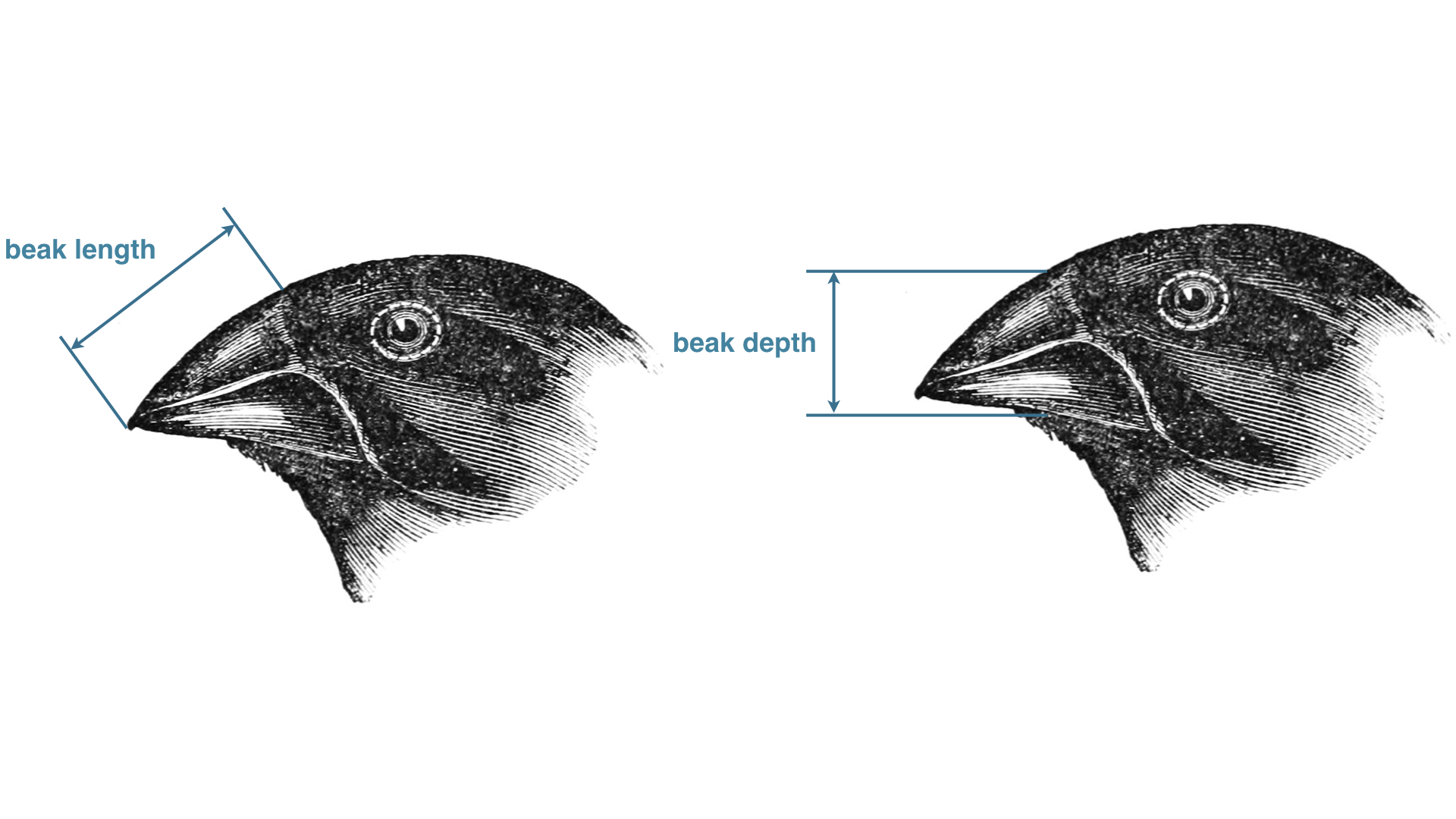Homework 5.2: Hacker stats with Darwin’s finches (55 pts)
Peter and Rosemary Grant of Princeton University have visited the island of Daphne Major on the Galápagos every year for over forty years and have been taking a careful inventory of the finches there. The Grants published a wonderful book, 40 years of evolution: Darwin’s finches on Daphne Major Island. They were generous and made their data publicly available on the Dryad data repository.
We will focus on the primary two species of ground finch on Daphne Major, Geospiza fortis and Geospiza scandens. In this data set, you will find measurements of the beak length (tip to base) and beak depth (top to bottom) of these finches in the years 1973, 1975, 1987, 1991, and 2012. Also included in that data set is the band number for the bird, which gives a unique identifier. (I obtained the data sets as separate files from the Dryad repository, tidied them, and saved the data set as a CSV.) The image below defines the beak length and beak depth.

Your task is to devise a measure for the shape of a beak. That is, invent some scalar measure that combines both the length and depth of the beak and justify your choice. Compare this measure between species and through time. (This is very open-ended. It is up to you to define the measure, make relevant plots, compute confidence intervals, and possibly do hypothesis tests to see how shape changes over time and between the two species. And don’t forget the EDA is the starting point of any analysis!)